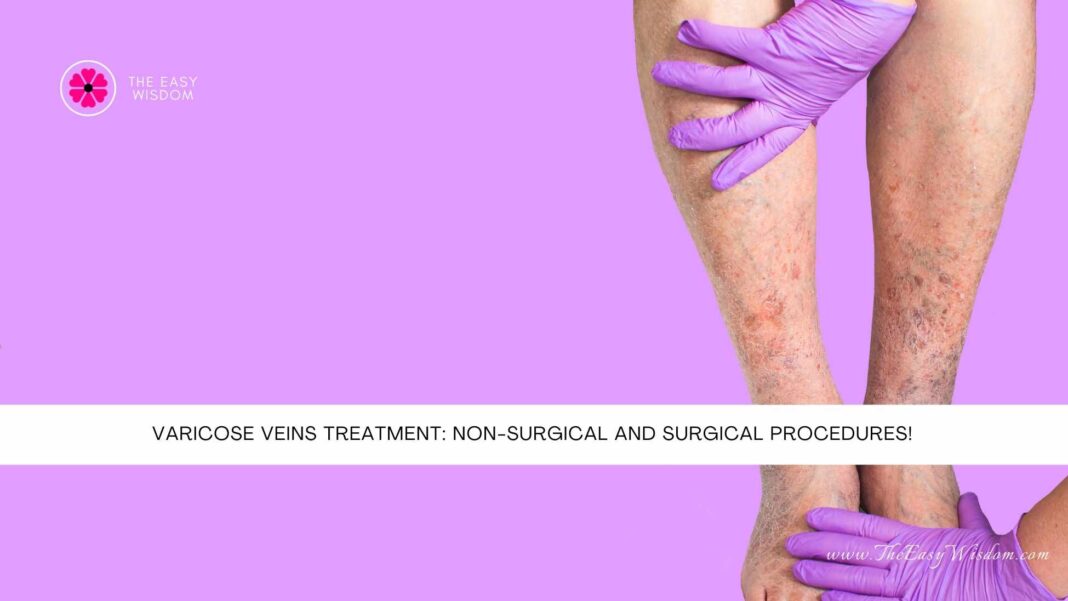Varicose veins are a common but often underestimated problem that many people struggle with. These swollen, twisted veins that often appear on the legs and feet can not only be unsightly but also cause discomfort and pain. While varicose veins can affect anyone, they are more common in women, especially during pregnancy or with aging. Fortunately, there are several varicose veins treatment options available today that can help alleviate symptoms and improve your quality of life. In this article, we’ll take you through the different treatment and surgical procedure options so you can make an informed decision.
Understanding Varicose Veins and Their Causes
Varicose veins occur when veins become enlarged and overstretched, which happens when the valves inside the veins fail to work properly. These valves are supposed to keep blood flowing in one direction, but when they weaken or become damaged, blood starts to pool in the veins, causing them to swell. Various factors, such as pregnancy, obesity, prolonged standing, and a family history of the condition, can increase the risk of developing varicose veins. Understanding the cause of your condition is crucial in choosing the right varicose veins treatment.
Non-Surgical Varicose Veins Treatment
Before diving into surgical options, there are several non-surgical treatments that can provide relief from varicose veins, especially in the early stages. One of the most common methods is varicose veins treatment. Wearing compression stockings helps improve circulation, reduces swelling, and prevents the veins from getting worse. These stockings apply gentle pressure to your legs, which can help the blood flow more efficiently and reduce the feeling of heaviness or pain.
In addition to compression therapy, lifestyle changes such as exercising regularly and elevating your legs can also aid in managing varicose veins. By improving your circulation, these simple steps can help minimize symptoms and prevent further damage. Also, avoiding long periods of standing or sitting can reduce the strain on your veins. If you’re looking for a non-invasive approach to varicose veins treatment, these options can often be effective for mild cases.
Sclerotherapy: A Popular Minimally Invasive Treatment
Sclerotherapy is another widely used treatment for varicose veins, especially for smaller veins or spider veins. During this procedure, a special solution is injected directly into the problematic veins, causing them to collapse and eventually fade away. The procedure is minimally invasive and doesn’t require any incisions, making it a popular choice for those who want to avoid surgery.
Most people experience minimal discomfort during the procedure, with only slight swelling or bruising afterward. The recovery time is relatively short, and patients can usually return to their daily activities within a few days. Sclerotherapy is often effective for people who have mild to moderate varicose veins and are looking for a less invasive treatment option. For larger veins, however, additional procedures may be needed to achieve the best results.
Laser Treatment for Varicose Veins
Laser treatment has become an increasingly popular option for those seeking an effective and non-invasive approach to varicose veins treatment. Laser therapy works by directing focused light energy at the affected veins, causing them to heat up and collapse. Over time, the body naturally absorbs the treated veins, reducing their appearance and symptoms.
One of the main benefits of laser treatment is that it’s a relatively quick procedure that doesn’t require cuts or stitches, making it ideal for those who want a minimally invasive option. The procedure is performed in a doctor’s office under local anesthesia, and most patients can resume their normal activities shortly after. Laser treatment is most effective for smaller varicose veins and is a great alternative for individuals who are not yet ready for surgery.
Surgical Options for Severe Varicose Veins
While non-surgical treatments are often effective, some cases of varicose veins may require surgical intervention. One of the most common surgical procedures is vein stripping. During this operation, the affected veins are removed through small incisions made in the skin. Although it’s a more invasive procedure than the others, vein stripping can be an effective solution for large, stubborn varicose veins that have not responded to other treatments.
Another surgical option is endovenous laser therapy (EVLT). This procedure uses laser technology to close off problematic veins from within. It’s performed under local anesthesia and typically involves smaller incisions than vein stripping. EVLT is minimally invasive, with fewer risks and complications than traditional surgery, and it’s suitable for patients with more severe varicose veins. Your doctor will assess your individual condition to determine if this procedure is appropriate for you.
Recovery and Long-Term Care
Regardless of the varicose veins treatment you choose, proper aftercare and recovery are essential for achieving the best results. After any procedure, you may experience some discomfort, swelling, or bruising, but this is typically temporary. Most people can return to their regular activities within a few days to a few weeks, depending on the treatment used. If you’re looking for further guidance on varicose veins or need personalized advice, coaching services from experienced specialists can provide the support you need.
To ensure long-lasting results, it’s important to adopt healthy lifestyle habits. This includes maintaining a healthy weight, exercising regularly, and wearing compression stockings as recommended by your doctor. Regular follow-up appointments are also necessary to monitor your progress and ensure the treated veins remain closed.




